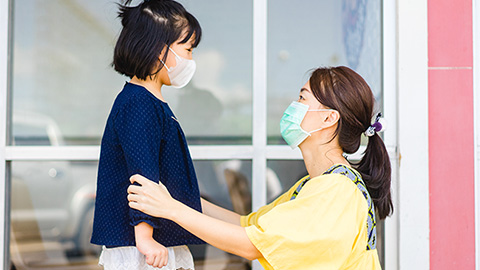
Back in 2012, there was a TV show that chronicled the lives of “preparation enthusiasts”, Americans who believe that an impending doomsday event is looming. These otherwise ordinary folks would stockpile food, water and weapons; build panic rooms and bomb shelters; and develop extremely elaborate survival protocols. Their goal was to outlast and outlive any apocalyptic scenario, be it a natural disaster, a financial collapse, a nuclear winter, or most relatably, a pandemic. To the average viewer, their measures were often seen as excessive and at times, comical. “Way too paranoid,” we thought!
Alas, hindsight is always 20/20.
Two months into our Extended Community Quarantine, many of us are regretting that we weren’t more prepared for the outbreak. While the COVID-19 pandemic is hardly apocalyptic, it has been catastrophic enough to change life as we know it; enough to spur most people into preparing their own emergency measures.
While we know there isn’t a one hundred percent full-proof plan on preparing for a pandemic, there are simple measures you can take to protect your home from COVID-19. Follow these useful pointers, and see to it that you never get caught with your masks down.
So, how exactly do you prepare for a pandemic? And what are the simple measures you can take to protect your home from COVID-19? Follow these useful pointers, and see to it that you never get caught with your masks down.
Hope for the best, prepare for the worst
You might be thinking: “It’s too late to prepare for something that’s already happened!” Given what we know now, it is still better to err on the side of safety. According to the WHO, pandemics do not occur frequently, with the last case occurring in 1968.1 However, that doesn’t rule out future outbreaks and epidemics. As such, emergency preparations are still advisable. Here are a few simple measures you can take:
- Prepare a 3-day emergency kit, complete with necessities for every member of your household. This should include food, medicine, water, a flashlight, and some special toys to keep your children calm during an emergency situation. If possible, include a radio to ensure you’re attuned to any emergency warnings and alerts.
- Develop a communication plan in case you and your family members are separated. If your children are old enough, teach them how to call 911 and memorize important phone numbers.2
- If you are expecting, have a lengthy discussion with your OB-GYN regarding all the necessary preparations you should make. An ounce of preparation could save you a pound of stress!
These measures won’t just help you in an outbreak; they may also serve as a safety net for any other cataclysmic events that could happen in your lifetime.
What can you do right now?
There are a number of simple, yet effective changes you can make at home to reduce the risk of infection:
- Ensure that shared spaces in the room have good airflow. You can open a window, or turn on an air purifier.
- Create a handwashing habit for yourself, and your entire family. Do this for 20 seconds at a time, every single time.
- Use a household cleaner and wipe things that get touched frequently. This includes doorknobs, toys, remotes, sink handles and phones. Do this daily!
- You may create a makeshift disinfection station outside your front door for added measure; but as much as possible, do not allow visitors inside your home.3
The pandemic may last as long as two years. Approximately two-thirds of the world’s population would need to become immune to the virus first.4 Until then, we need to do our all we can to curb the spread of the virus in our own spaces.
All it takes is a little preparation.
For more information about COVID-19, visit www.covid-19facts.com.
Resources:
1 Epidemic Alert & Response. April 2005. WHO Checklist for Influenza Pandemic Preparedness Planning
https://www.who.int/csr/resources/publications/influenza/FluCheck6web.p…
2 Center for Disease Control and Prevention. 20 February 2020. Caring for Children in a Disaster
https://www.cdc.gov/childrenindisasters/before-during-after.html
3 KidsHealth from Nemours. April 2020. Coronavirus (COVID-19): Home Care & Precautions
https://kidshealth.org/en/parents/coronavirus-stop-spread.html
4 Bloomberg. 1 May 2020. Covid-19 Pandemic Likely to Last Two Years, Report Says
https://www.bloomberg.com/news/articles/2020-05-01/covid-19-pandemic-li…


